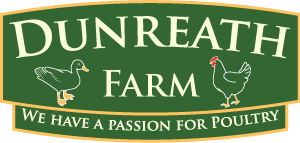Why Own Guineas?
Guinea fowl have become very popular because they will quickly, safely rid an area of disease carrying ticks, as well as other insect pests and small rodents. Guineas make great pest exterminators for gardens too.
Guinea fowl are the clowns of the poultry world with their white painted faces, red wattles and a horn that sits on top of their heads called a helmet. Their high speed and erratic movements are often very comical and their antics are fun to watch.
Besides having a voracious appetite for bugs, guineas also dine on grasses, weeds and their seeds. They are carnivores and love to eat small rodents and reptiles.
Guinea fowl also make a superb alarm system. They will make quite the noisy raucous whenever any change occurs in their environment. They hate snakes and they will warn off and sometimes even kill any snakes they come across.
Guinea Types and Colors
The original color of helmeted Guinea fowl is called Pearl. Each feather has a dark gray background and white spots called “pearls”. This color evolved to camouflage the birds for better survival. Selective breeding has increased color choices to a mind boggling number. Most of the other colors guineas are available in make them an easier target for predators.
Guineas come in two sizes. The originally domesticated variety of Guinea fowl weighs up to about 3½ pounds and we call these Standard guineas. These lighter weight guineas tend to fly and range a lot farther than our jumbo guineas. They also tend to be more nervous.
Jumbo Guinea fowl are a genetically improved strain that weighs from 5 -7 pounds. We raise the Jumbo because they have the potential to consume more bugs, are calmer and are content staying on a smaller sized property.
Guinea Terminology
The proper name to refer to them is guinea fowl not guinea hens.
A male guinea is called a cock.
A female is called a hen.
Young guineas are called keets.
Determining Sex
With chicks or ducklings, sex is determined by vent sexing. This is not possible with keets. The only way to tell the sex, with any degree of certainty, in the early stages of a keet’s life is through genetic testing. This is not usually done because of the expense. This is why we only sell keets in a straight run.
If you can wait out the suspense for 8 or 9 weeks, keets begin vocalizing in sounds unique to their sex. The adult guinea male is called a cock. He makes a one-syllable sound when alerted by anything unusual. He makes a ONE-syllable sound only: “CHI-CHi-Chi-chi…”. The adult female is called the guinea hen. She makes a two-syllable sound: “buck-wheat, buck-wheat”. She can imitate the sound of the cock but the cock cannot imitate the hen.
As adults, the cocks may also be recognized by having larger wattles than the female, and a somewhat larger helmet. Although physical characteristics may suggest the sex of an adult guinea fowl, sound is the sure way to determine the sex.
More Guinea Facts
Guinea fowl, are capable of short flights. When startled they burst into the air like a pheasant. During the day they eat, breed, nest and lay their eggs on the ground. Like chickens, Guinea fowl like to roost on some kind of perch during the night. People who raise them usually provide some kind of coop with roomy perches. This keeps the birds dry, warmer and safe from nocturnal predators such as owls, raccoons, skunks, foxes and possums.
Guinea fowl are flocking birds so they need the company of others of their species. Three or four Guinea fowl is a minimally acceptable size flock size to make the birds comfortable and content. All members of the flock will establish a pecking order.
For people who have never kept guinea fowl it’s best to start with keets. You’ll want to train your Guinea fowl to come to their coop each night and this is most easily done starting when they are keets.
For complete information on how to successfully raise Guinea fowl keets, visit the Guinea Fowl International Association’s website at: http://www.guineas.com. On their forum you can ask specific questions and get knowledgeable responses quickly. It’s an invaluable resource for the Guinea fowl keeper!
